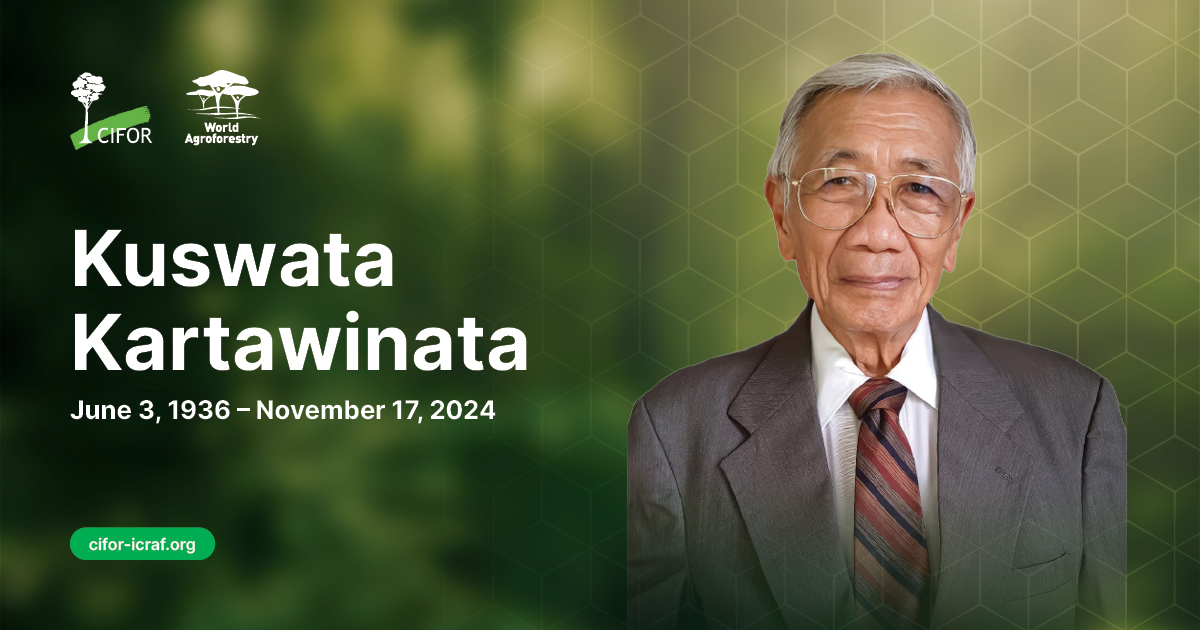In recognition of the importance of Non-Timber Forest Products (NTFPs) in both social and forest resource management terms, one of CIFOR's major projects is on "Sustainable Use and Development of Non-Timber Forest Products ". The project is aiming at a world level comparison of NTFPs-based forest use, and currently has field sites in seven countries, including Indonesia. This paper reports on a study on the interaction between land-use changes and forest management strategies at the household level, and how this interaction is shaped by ecological, physical, socio-economic and other exogenous factors (e.g., policies). Field sites in Indonesia are in Pasir and Mahakam in East Kalimantan, and the West of Lake Toba in North Sumatra. We are going to approach the problem by combining various data collection and data analysis tools. Data collection tools include remote sensing, household surveys, ecological surveys, market studies, gender and diversity studies. Analytical tools include GIS, statistical analysis, spatial modeling, land-use decision modeling, and gender and diversity analysis. The general framework of the study covers three scales: landscape, local and household. In the landscape level, time series of satellite images classified based on vegetation cover together with other data such as road, eleva-tion, soil type, administrative boundaries and population are used to obtain a transition probability matrix (TPM). The area with major changes is taken as local scale. Depending on the nature of the changes (e.g. road, plantation, etc.), we will apply optimization and econometric models based on data from the household studies. The overall model also allows for making scenarios to predict or outline possible future changes. We will study the impact of land-use change on biodiversity through the landscape diversity, complexity and heterogeneity. For preliminary study, we started with the simplest TPM, namely Markov TPM. A temporal Markov TPH was obtained from post-classification images of two Landsat TH images of North Sumatra taken in 1993 and 1996. Projection using this temporal Markov TPH shows the tendency of decreasing primary forest area, and increasing other types of vegetation cover over time. The spatial Markov TPM shows that it is very rare for primary forest to be directly adjacent to barren areas. More common a gradient between primary forest, secondary forest and other types of scrubs and crops is observed. Secondary forest's role as a pivotal state, both temporally and spatially, can clearly be seen m the TPM. The preliminary analysis of the household data in two villages in North Sumatra shows that land-use changes are associated with new economic opportunities. This has reduced the time spent on the management of benzoin gardens, but it has not lead to more drastic land-use changes such as abandoning the gardens completely. Rather they are kept as a reserve for possible future utilization. This has an influence on the resilience of the forest systems of the region and contributes to explain the rates and types of change observed.
Publication year
1999
Authors
Dewi, S.; Garcia-Fernandez, C.; Ruiz Perez, M.; Belcher, B.; Angelsen, A.; de Agar, P.M.; Loken, A.; Lutnaes, K.
Language
English
Keywords
data analysis, data collection, forest management, land use change, nontimber forest products, remote sensing, household surveys, gender
Geographic
Indonesia























